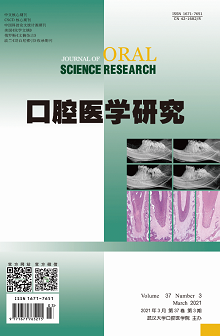|
|
Preliminary Study on Autologous Tooth Transplantation in Three Different Stages of Alveolar Socket
Reyisha·ABUDUKEYIMU, JIANG Chunyan, Ailimaierdan·AINIWAER, LI Yunyi, Adili·MOMING, WANG Ling
2021, 37(3):
255-259.
DOI: 10.13701/j.cnki.kqyxyj.2021.03.016
Objective: To evaluate the efficacy of autologous tooth transplantation at three different times after tooth extraction. Methods: 64 patients with posterior tooth loss were selected from the outpatient Department of Maxillofacial Surgery, Affiliated Stomatological Hospital of Xinjiang Medical University from June 2019 to December 2019. The patients were grouped according to the time of tooth loss as follows: 22 cases of fresh alveolar socket group, 21 cases of early alveolar socket group, and 21 cases of artificial alveolar socket group. Autologous tooth transplantation was performed respectively. Intraoperative time and fitting times of the donor teeth were recorded, and the efficacy of the donor teeth was reviewed at 1, 3, 6, 9, and 12 months after the operation. Clinical specialist examination and dental film were taken to evaluate the perioperative status, root healing, and root resorption of the transplanted teeth. Results: There was no statistically significant difference in the efficacy of three groups 12 months after transplantation (P>0.05). Both fresh alveolar and early alveolar were superior to artificial alveolar in root healing (P<0.05). The root resorption of transplanted teeth with artificial alveolar implants was nearly half, with no significant difference to the early alveolar implants (P>0.05) but significant to the fresh alveolar implant (P<0.05). Other indicators, such as intraoperative indicators (detached time of donor tooth, number of donor tooth fitting), PD, AL, and patient satisfaction, showed no significant difference (P>0.05). Conclusion: Fresh alveolar fossa, early alveolar fossa, and artificial alveolar fossa can achieve high success rate and close curative effect.
References |
Related Articles |
Metrics
|

